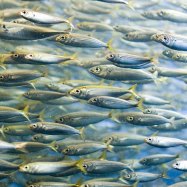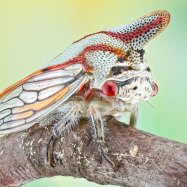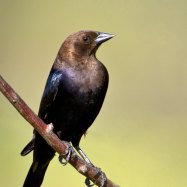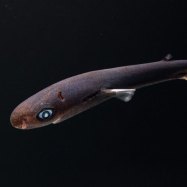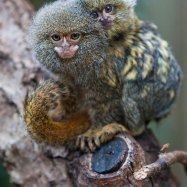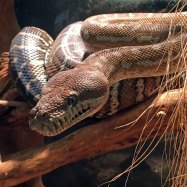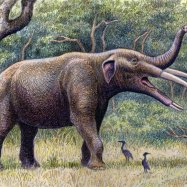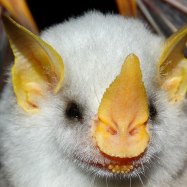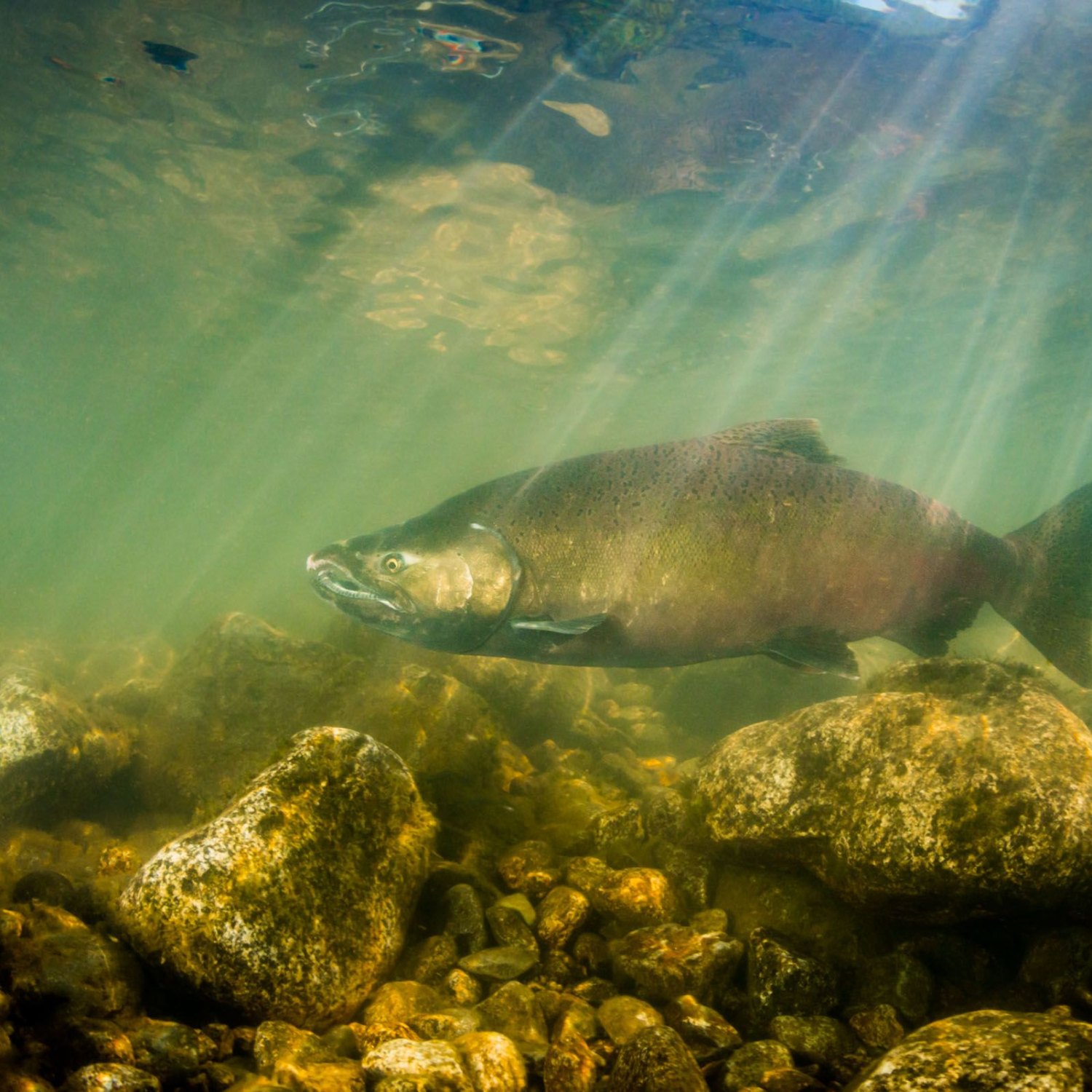
Chinook Salmon
Up to 1.8 meters (5.9 feet)
Chinook salmon, also known as king salmon, are a popular game and commercial fish found in the Pacific Northwest. These impressive fish can reach lengths of up to 1.8 meters and have a streamlined, torpedo-shaped body. They are a member of the Salmonidae family and are highly sought after for their delicious flavor and high nutritional value. Keep an eye out for this majestic fish on your next fishing trip in the Pacific Northwest!
Animal Details Summary:
Common Name: Chinook Salmon
Kingdom: Animalia
Habitat: Freshwater and saltwater
The Chinook Salmon: The Mighty King of the Pacific
The Pacific Northwest is home to one of the most majestic creatures in the ocean - the Chinook Salmon. Also known as the King Salmon, this fish is a true representation of strength, endurance, and resilience. With its torpedo-shaped body, dark blue-green back, and silver sides, the Chinook Salmon is a sight to behold.But there is more to this creature than just its stunning appearance Chinook Salmon. In this article, we will dive deep into the world of the Chinook Salmon and explore what makes it such a remarkable animal.
Scientific Classification
The Chinook Salmon, scientifically known as Oncorhynchus tshawytscha, belongs to the kingdom Animalia and the phylum Chordata. It is classified as a member of the class Actinopterygii, which includes all ray-finned fishes. Its order is Salmoniformes, which consists of salmon, trout, and other similar species. The Chinook Salmon is a part of the family Salmonidae, which includes all salmonids.Habitat and Distribution
The Chinook Salmon has a wide range of habitats, making it a versatile species. It can be found in both freshwater and saltwater, and it is often referred to as an anadromous fish, meaning it migrates from freshwater to saltwater for different stages of its life. It is native to the North Pacific Ocean, and its range extends from Alaska to northern California. The largest runs of Chinook Salmon can be found in the rivers of the Pacific Northwest, particularly in British Columbia, Washington, and Oregon Colletts Snake.Feeding and Diet
As a carnivorous fish, the Chinook Salmon's diet mainly consists of other fish, including herring, smelt, and sand eels. They also feed on squid, shrimp, and other crustaceans. Interestingly, the Chinook Salmon's diet changes as it migrates from freshwater to saltwater. In freshwater, it primarily feeds on plankton, insect larvae, and small fish, while in the ocean, it feeds on larger prey to fuel its long journeys.Physical Characteristics
One of the most striking features of the Chinook Salmon is its dark blue-green back and silver sides. This unique coloration helps it blend in with its surroundings and provides excellent camouflage against predators. The Chinook Salmon also has a streamlined and torpedo-shaped body, which allows it to move swiftly through the water.On average, the Chinook Salmon can grow up to 1.8 meters (5.9 feet) in length, with rare specimens reaching up to 2.5 meters (8.2 feet). They can weigh anywhere from 10 to 30 kilograms (22 to 66 pounds), with some individuals even reaching up to 50 kilograms (110 pounds). These large and powerful fish are known as the “king” of the salmon species, and for a good reason.
Life Cycle
The life cycle of the Chinook Salmon is truly remarkable. Their journey begins in freshwater, where they are born in the gravel beds of streams and rivers. After spending 3-4 years in freshwater, they begin their journey to the ocean, where they will spend another 2-4 years maturing. Once they reach maturity, they return to the same river or stream where they were hatched to spawn and start the cycle all over again.This journey can cover thousands of miles and is fraught with challenges. The Chinook Salmon must navigate through strong currents, waterfalls, and even dams to reach their spawning grounds. Along the way, they also face predators such as bears, birds, and other fish.
Importance to the Ecosystem and Human Society
The Chinook Salmon plays a vital role in the ecosystem of the Pacific Northwest. As a keystone species, their absence would have a significant impact on the entire ecosystem. These fish provide a food source for many predators, including bears, eagles, and other fish. They also bring essential nutrients back to the rivers and streams when they return to spawn, benefiting other aquatic organisms.Aside from its ecological value, the Chinook Salmon also holds significant cultural and economic importance to the Pacific Northwest. Indigenous communities have relied on this fish for thousands of years for sustenance and cultural purposes. It is also a popular sport fish and a significant contributor to the commercial fishing industry. In fact, the Chinook Salmon is considered one of the most valuable fish in the world, with an estimated global commercial value of over $350 million.
Threats and Conservation Efforts
Despite its significance and resilience, the Chinook Salmon faces various threats to its survival. Overfishing, habitat destruction, pollution, and climate change are some of the significant factors affecting this species. The construction of dams has also disrupted the natural migratory pathways of this fish, making it harder for them to reach their spawning grounds.To protect and conserve the Chinook Salmon, various efforts have been made, including the restoration of habitat, improved fishing regulations, and the creation of hatcheries to increase their population. There is also ongoing research to better understand the species and come up with effective conservation plans.
The Future of the Chinook Salmon
Despite the challenges and threats faced by the Chinook Salmon, there is still hope for its future. With the help of conservation efforts and sustainable fishing practices, we can ensure that this amazing species continues to thrive in its natural habitat. However, it is crucial to address the root causes of its decline, such as habitat destruction and pollution, if we want to see a significant change in its population.Furthermore, individuals can also play a role in preserving the Chinook Salmon and its ecosystem. Simple actions such as responsible fishing practices and reducing our carbon footprint can have a significant impact on the well-being of this species and the environment as a whole.
In Conclusion
The Chinook Salmon is more than just a fish - it is a symbol of strength, resilience, and interconnectedness in the Pacific Northwest. Its journey from the freshwater streams to the open ocean and back again is truly remarkable and a testament to the power of nature.While this mighty king of the Pacific faces numerous threats, there is still hope for its survival. By working together and taking action, we can ensure that generations to come will be able to witness the beauty and magnificence of the Chinook Salmon. Let us all do our part to protect this incredible species and its habitat for a better and more sustainable future.

Chinook Salmon
Animal Details Chinook Salmon - Scientific Name: Oncorhynchus tshawytscha
- Category: Animals C
- Scientific Name: Oncorhynchus tshawytscha
- Common Name: Chinook Salmon
- Kingdom: Animalia
- Phylum: Chordata
- Class: Actinopterygii
- Order: Salmoniformes
- Family: Salmonidae
- Habitat: Freshwater and saltwater
- Feeding Method: Carnivorous
- Geographical Distribution: North Pacific Ocean
- Country of Origin: United States and Canada
- Location: Pacific Northwest
- Animal Coloration: Dark blue-green on the back and silver on the sides
- Body Shape: Streamlined and torpedo-shaped
- Length: Up to 1.8 meters (5.9 feet)

Chinook Salmon
- Adult Size: Around 35 to 45 inches
- Average Lifespan: 3 to 7 years
- Reproduction: Anadromous
- Reproductive Behavior: Spawns in freshwater streams and rivers
- Sound or Call: None
- Migration Pattern: Long-distance migration
- Social Groups: Solitary
- Behavior: Gregarious during spawning season
- Threats: Overfishing, habitat destruction, dams, pollution
- Conservation Status: Threatened
- Impact on Ecosystem: Key species in the Pacific Northwest ecosystem
- Human Use: Commercial and recreational fishing
- Distinctive Features: Large size, hooked jaws in males
- Interesting Facts: The largest species of Pacific salmon
- Predator: Humans, bears, birds of prey, sea lions
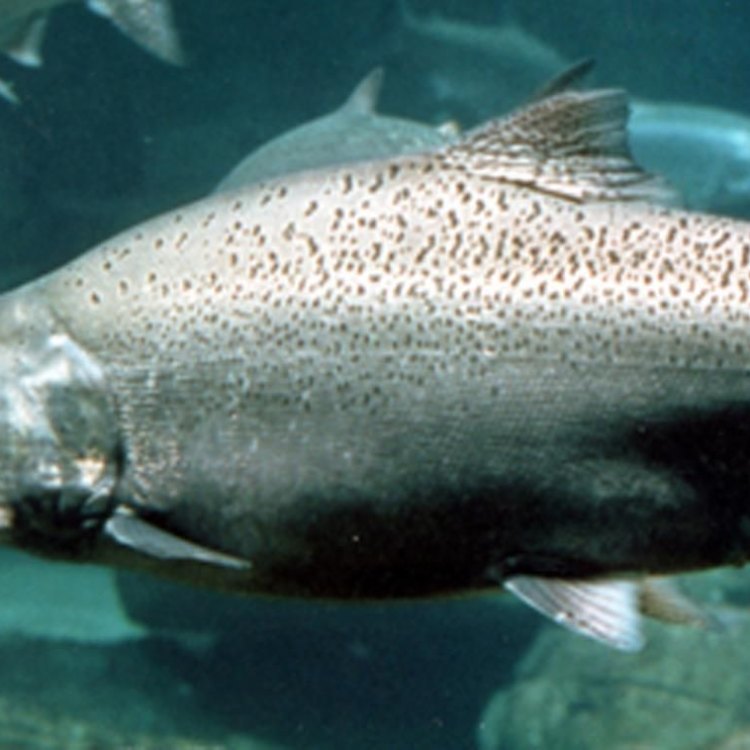
Oncorhynchus tshawytscha
The Mighty Chinook Salmon: A Key Species in the Pacific Northwest Ecosystem
The Pacific Northwest is home to a wide variety of iconic species, from grizzly bears to bald eagles to orcas. But one species stands out as a vital component of the region's intricate ecosystem: the Chinook salmon.With its impressive size, unique life cycle, and crucial role in the food chain, the Chinook salmon has captured the imagination and admiration of humans for centuries. In this article, we will dive into the fascinating world of this remarkable fish, exploring its physical characteristics, behavior, threats, and conservation efforts PeaceOfAnimals.Com.
The King of Salmon
The Chinook salmon, also known as king salmon or Oncorhynchus tshawytscha, is the largest species of Pacific salmon and can weigh up to 130 pounds. These majestic creatures can grow to be around 35 to 45 inches in length, making them one of the largest species of fish in the world.
Native to the Pacific coast of North America, the Chinook salmon can be found from Alaska down to California. They are also found in parts of Asia, including Japan and Russia. Despite their widespread distribution, the majority of wild Chinook salmon populations are found in the rivers and streams of the Pacific Northwest.
A Short Life Span with a Long Journey
Chinook salmon have a relatively short lifespan, with an average of 3 to 7 years. However, their journey from birth to death is anything but ordinary. Unlike most fish, Chinook salmon are anadromous, meaning they are born in freshwater, migrate to the ocean, and return to their birthplace to spawn.
The life cycle of a Chinook salmon starts in a river or stream, where they hatch from eggs buried in gravel Catahoula Bulldog. They spend the first few months of their lives in these freshwater habitats, feeding on insects and small aquatic organisms.
When they reach a certain size, usually about 2 to 3 inches, they begin their journey to the ocean. This is where they spend the majority of their adult lives, feeding on a diet rich in marine life and growing to their impressive size.
After 1 to 5 years in the ocean, the Chinook salmon return to the same freshwater streams and rivers where they were hatched. This long-distance migration can be as short as a few hundred yards or as long as thousands of miles, depending on the location. It is an arduous journey fraught with obstacles, but it is necessary for the continuation of the species.
Upon reaching their breeding grounds, the Chinook salmon undergo physical changes to prepare for spawning. Their scales take on a greenish hue, and the males develop distinctive hooked jaws. They also stop eating, relying solely on stored fat reserves for their energy.
Reproductive Behavior: A Natural Wonder
Once in their breeding grounds, the Chinook salmon participate in one of the most extraordinary reproductive behaviors in the animal kingdom. They gather in large numbers, with males fiercely competing for females to mate with. The females will dig nests, known as redds, in the gravel beds of the river or stream, using their tails.
As the female releases eggs into the redd, the male fertilizes them with his sperm. This frenzied and chaotic process can result in the release of thousands of eggs, ensuring the survival of the species.
After spawning, the Chinook salmon have completed their life's journey, and they slowly die, providing an important source of nutrients for the river ecosystem. Their carcasses also serve as a food source for many predators, such as bears, birds of prey, and other fish, keeping the delicate balance of the food chain intact.
Conservation Status: A Fading Presence
Unfortunately, the Chinook salmon is currently listed as a threatened species, with several populations listed as endangered. This decline in population can be attributed to a variety of factors, including overfishing, habitat destruction, dams, pollution, and climate change.
The Chinook salmon's long-distance migration makes them particularly vulnerable to these threats. Dams can block their passage to breeding grounds, disrupting their life cycle. Pollution and habitat destruction can adversely affect their food sources, leading to starvation and reproductive issues.
Climate change is also a significant concern for Chinook salmon populations. Rising water temperatures can negatively impact their growth and survival, and changing ocean currents can make their journey from breeding grounds to the ocean more challenging.
Human Use: A Story of Feasting and Fishing
For centuries, the Chinook salmon has been a vital source of food for indigenous people and a staple in the diet of the Pacific Northwest region. Today, it is still an essential food source for many, but it is also a highly sought-after species for recreational and commercial fishing.
Commercial fishing of Chinook salmon has been a significant industry in the Pacific Northwest, bringing in millions of dollars annually. However, overfishing and habitat destruction have greatly impacted wild populations, leading to strict regulations and limits on commercial fishing.
Recreational fishing is also popular, with thousands of annual fishing trips and tournaments dedicated to catching Chinook salmon. While recreational fishing has stricter regulations, it can still impact wild populations, leading to calls for responsible and sustainable fishing practices.
Distinctive Features: A Fish Like No Other
The Chinook salmon's physical characteristics make it a unique and recognizable species. Its large size and impressive weight set it apart from other Pacific salmon, making it a coveted catch for anglers.
One of the most distinctive features of the Chinook salmon is the hooked jaws seen in males during the breeding season. These large, sharp teeth are used to fend off competing males during the spawning frenzy, adding to the salmon's fierce and powerful image.
Interesting Facts: Did You Know?
- Chinook salmon have no sound or call, making them one of the few species of salmon that do not vocalize.
- In 1910, a Chinook salmon weighing a whopping 126 pounds was caught in a commercial fishing net off the coast of British Columbia, earning it the title of the largest Pacific salmon ever recorded.
- On average, a Chinook salmon releases around 4,000 eggs into a redd during spawning, with some females producing up to 14,000 eggs.
- The Chinook salmon is a popular food source for killer whales, orcas, and is known to be a significant part of their diet.
The Mighty Chinook Salmon: A Vital Piece of the Puzzle
The Chinook salmon may not be the most well-known or flashy species in the Pacific Northwest, but its impact on the region's ecosystem cannot be underestimated. As a key species in the food chain, the Chinook salmon provides food for a wide range of predators, from humans to orcas, and contributes to the overall health and balance of the ecosystem.
However, this iconic species is facing numerous threats and is in danger of disappearing from our rivers and streams. It is up to all of us to take action to protect and preserve this vital component of the Pacific Northwest ecosystem. By supporting conservation efforts, advocating for responsible fishing practices, and working towards reducing our impact on the environment, we can help ensure that the Chinook salmon continues to thrive for generations to come.

The Chinook Salmon: The Mighty King of the Pacific
Disclaimer: The content provided is for informational purposes only. We cannot guarantee the accuracy of the information on this page 100%. All information provided here may change without prior notice.

